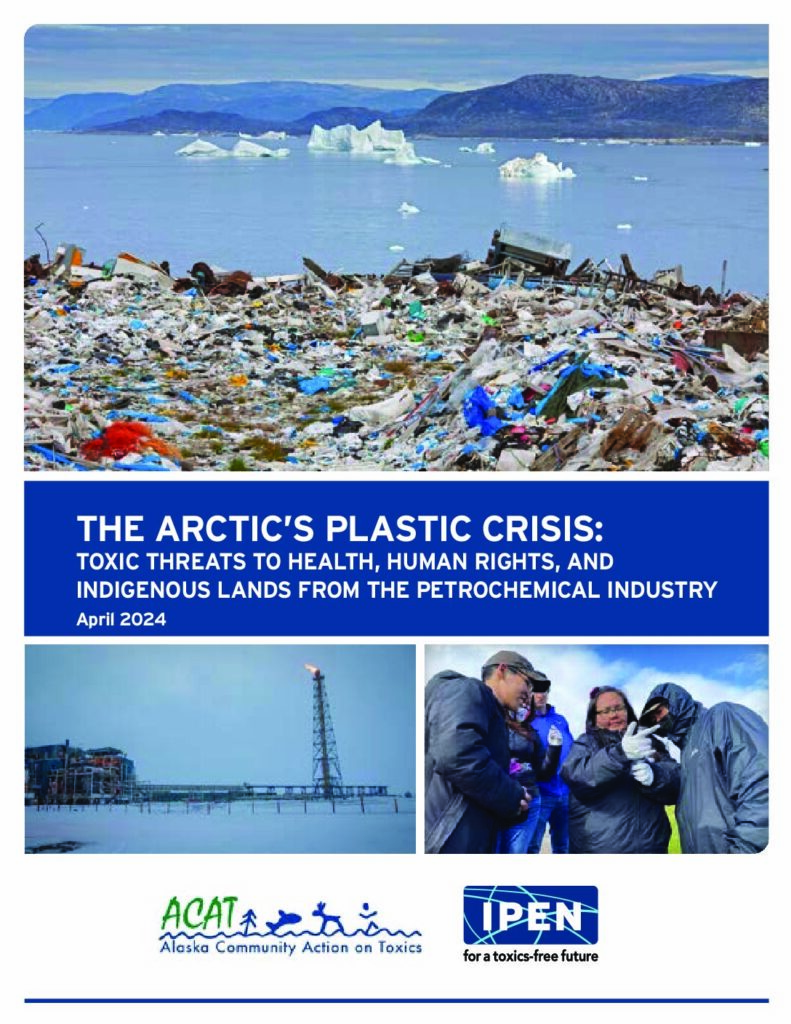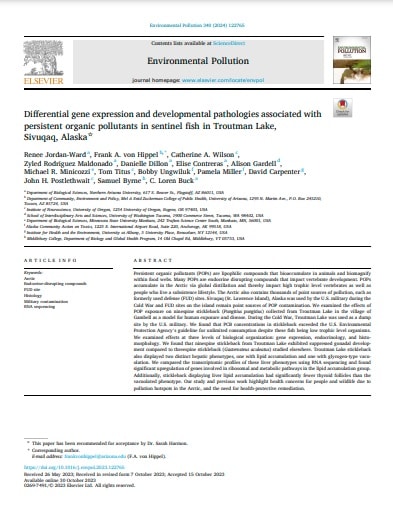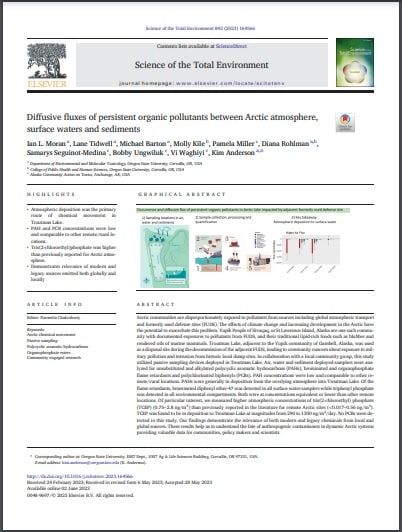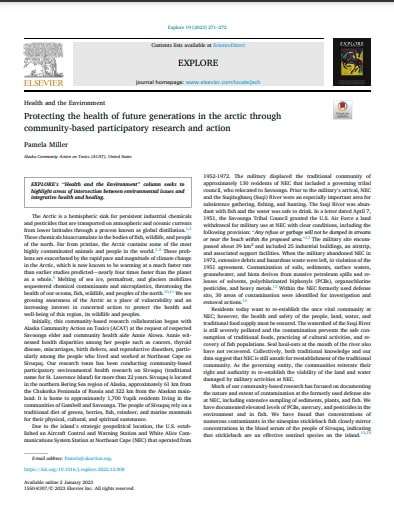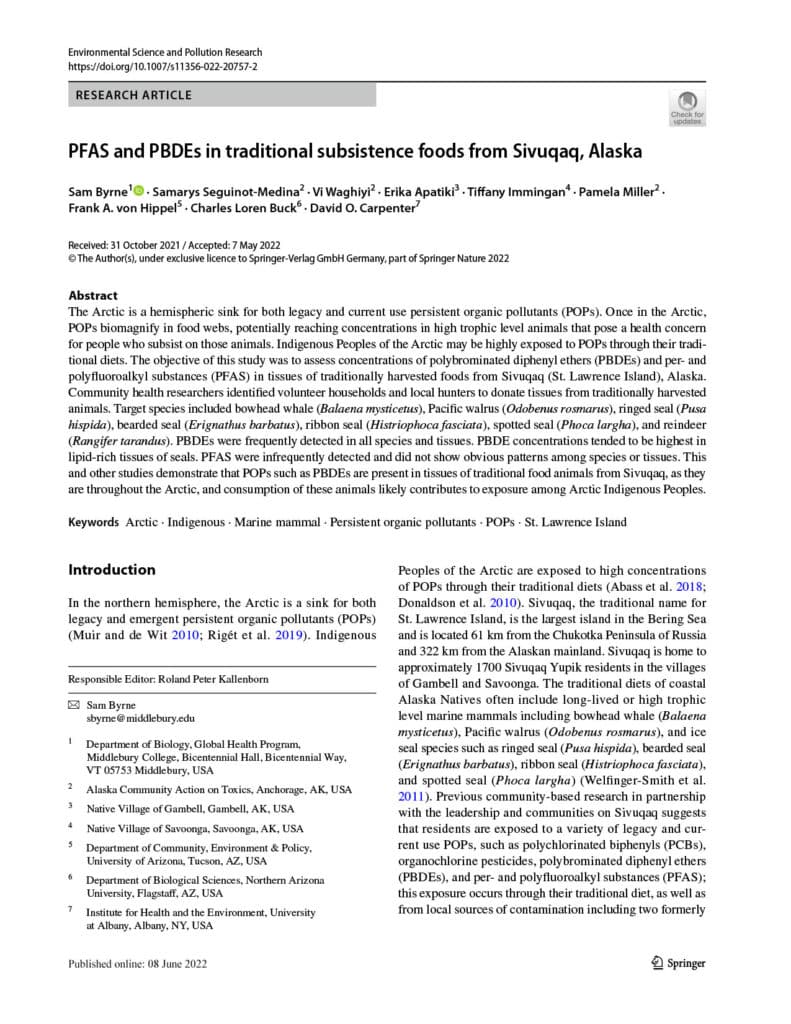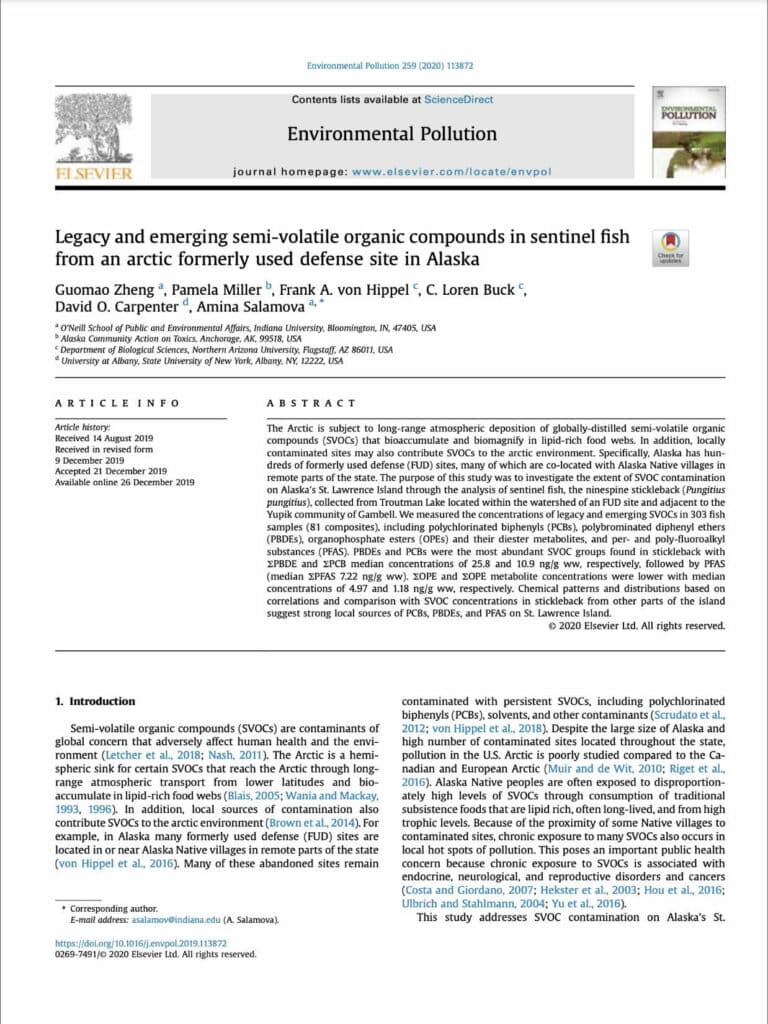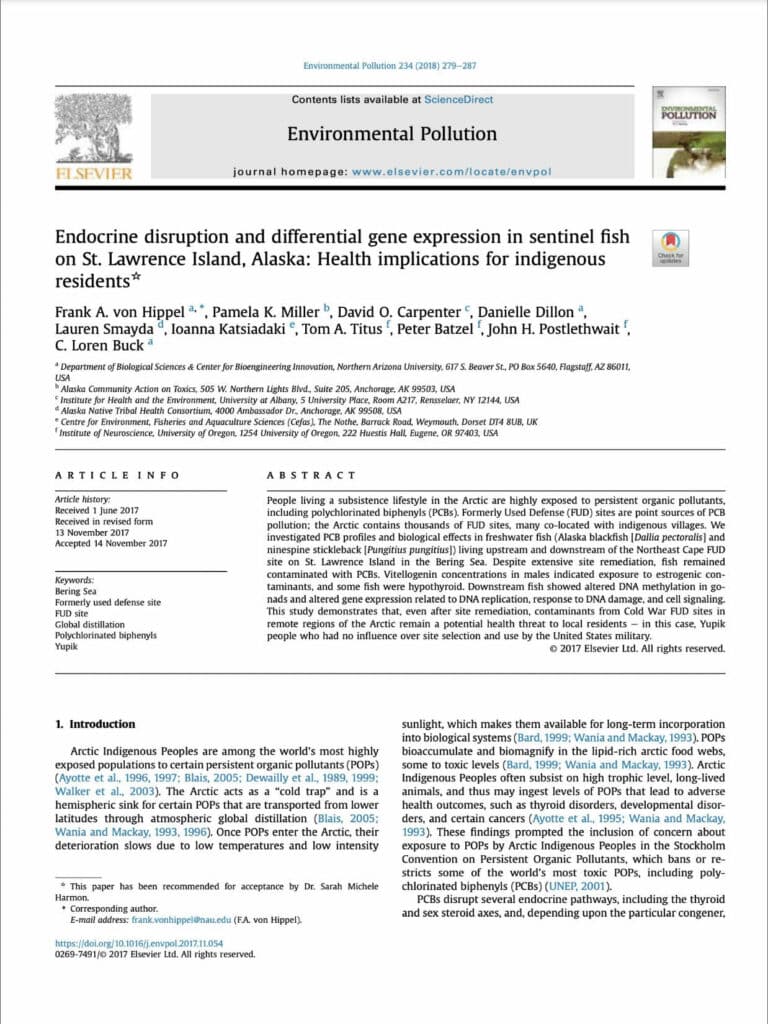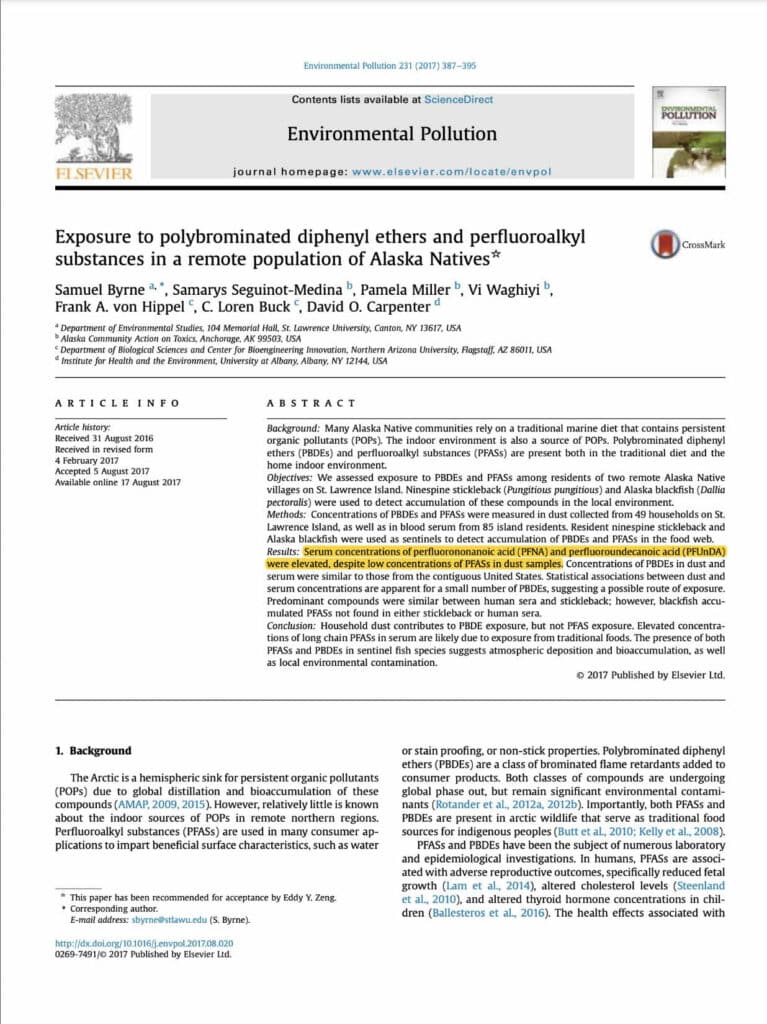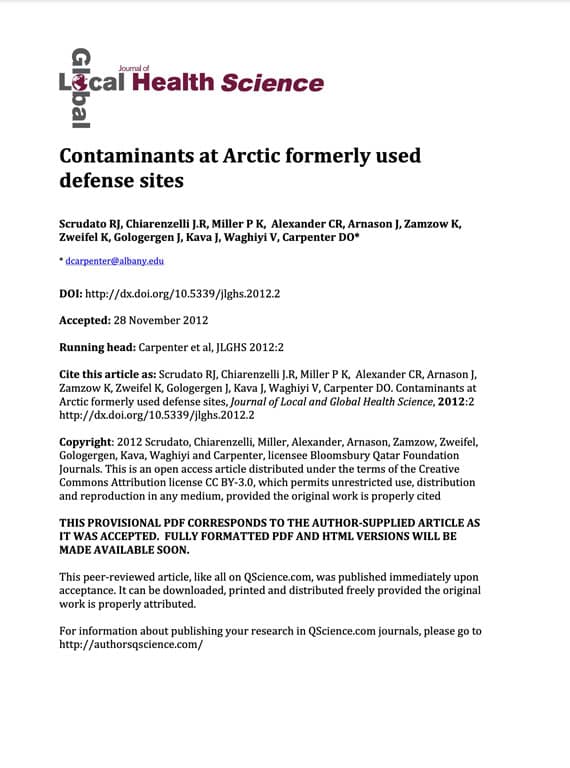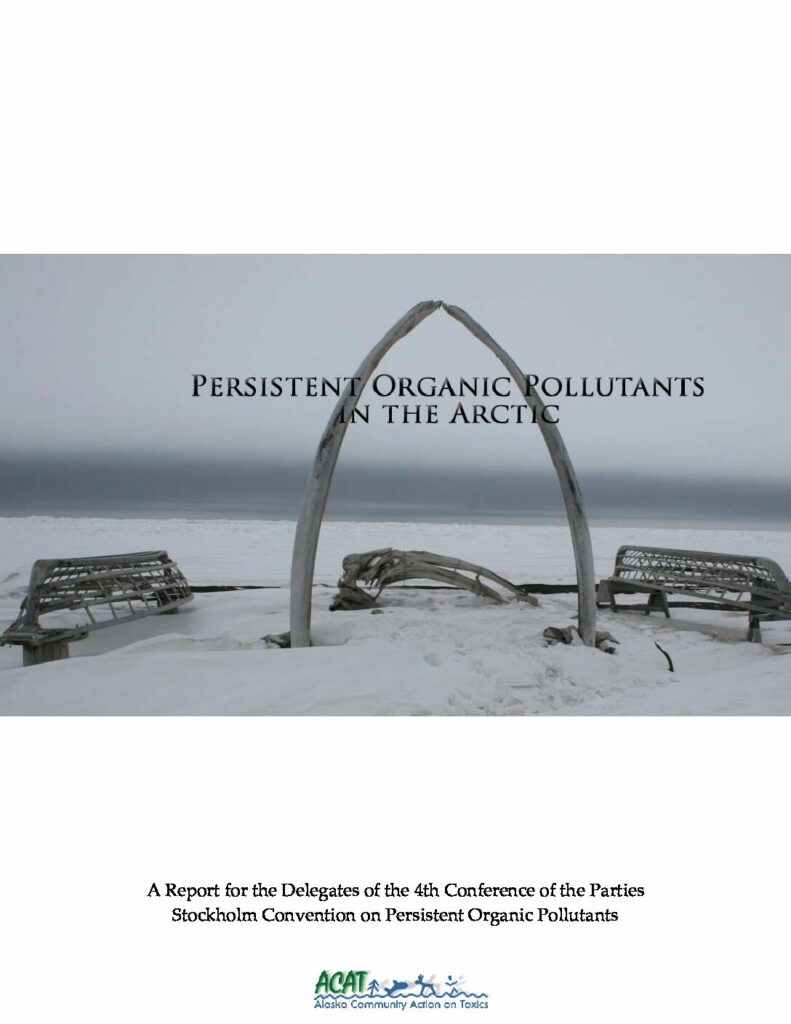Persistent Organic Pollutants (POPs)
The Arctic’s Plastic Crisis: Toxic Threats to Health, Human Rights, and Indigenous Lands From the Petrochemical Industry
Damage to the Arctic from the fossil fuel/petrochemical industry includes threats from chemicals, plastics, and climate. These have combined to poison the lands, waters, and traditional foods of Arctic Indigenous Peoples, with ongoing health effects that threaten their cultures and communities. This report highlights the voices and testimonies of Indigenous leaders who have witnessed these…
Read MoreDifferential gene expression and developmental pathologies associated with persistent organic pollutants in sentinel fish in Troutman Lake, Sivuqaq, Alaska
Persistent organic pollutants (POPs) are lipophilic compounds that bioaccumulate in animals and biomagnify within food webs. Many POPs are endocrine disrupting compounds that impact vertebrate development. POPs accumulate in the Arctic via global distillation and thereby impact high trophic level vertebrates as well as people who live a subsistence lifestyle. The Arctic also contains thousands of point…
Read MoreDiffusive fluxes of persistent organic pollutants between Arctic atmosphere, surface waters and sediments
Arctic communities are disproportionately exposed to pollutants from sources including global atmospheric transport and formerly used defense sites (FUDS). The effects of climate change and increasing development in the Arctic have the potential to exacerbate this problem. Yupik People of Sivuqaq, or St Lawrence Island, Alaska are one such community with documented exposures to pollutants from FUDS, and their…
Read MoreProtecting the health of future generations in the arctic through community-based participatory research and action
The Arctic is a hemispheric sink for persistent industrial chemicals and pesticides that are transported on atmospheric and oceanic currents from lower latitudes through a process known as global distillation. These chemicals bioaccumulate in the bodies of fish, wildlife, and people of the north. Far from pristine, the Arctic contains some of the most highly…
Read MorePFAS and PBDEs in traditional subsistence foods from Sivuqaq, Alaska
The Arctic is a hemispheric sink for both legacy and current use persistent organic pollutants (POPs). Once in the Arctic, POPs biomagnify in food webs, potentially reaching concentrations in high trophic level animals that pose a health concern for people who subsist on those animals. Indigenous Peoples of the Arctic may be highly exposed to…
Read MoreLegacy and emerging semi-volatile organic compounds in sentinel fish from an arctic formerly used defense site in Alaska
The purpose of this study was to investigate the extent of contamination from military operations on Alaska’s St. Lawrence Island (Sivuqaq) through the analysis of sentinel fish, the ninespine stickleback (Pungitius pungitius), collected from Troutman Lake located within the watershed of a formerly used defense site and adjacent to the Yupik community of Gambell. The…
Read MoreEndocrine disruption and differential gene expression in sentinel fish on St. Lawrence Island, Alaska: Health implications for indigenous residents
We investigated polychlorinated biphenyls (PCBs) profiles and endocrine disruption in Alaska blackfish and ninespine stickleback living in the vicinity of the Northeast Cape formerly used defense (FUD) site on St. Lawrence Island in the Bering Sea. FUD sites are point sources of PCB pollution; the Arctic contains thousands of FUD sites, many co-located with indigenous…
Read MoreExposure to polybrominated diphenyl ethers and perfluoroalkyl substances in a remote population of Alaska Natives
We assessed exposure to PBDEs and PFAS among residents of two remote Alaska Native villages on St. Lawrence Island. We also measured these contaminants in the sentinel fish species, ninespine stickleback and Alaska blackfish.
Read MoreContaminants at Arctic formerly used defense sites
This study found elevated levels of contaminants from the military site at Northeast Cape in sediments and plants, including mercury, mirex and other pesticides, and PCBs. Through congener-specific analysis, we were able to distinguish contaminants from the military sites in the region from those accumulated through long-range transport.
Read More
